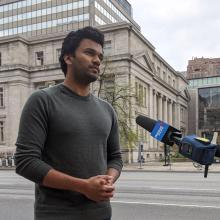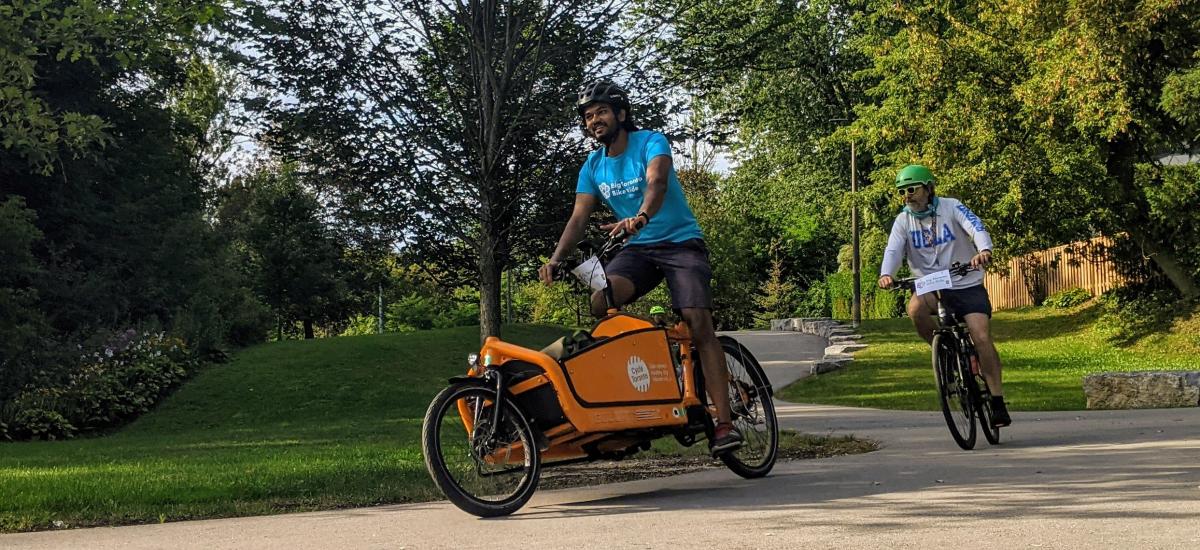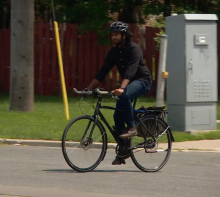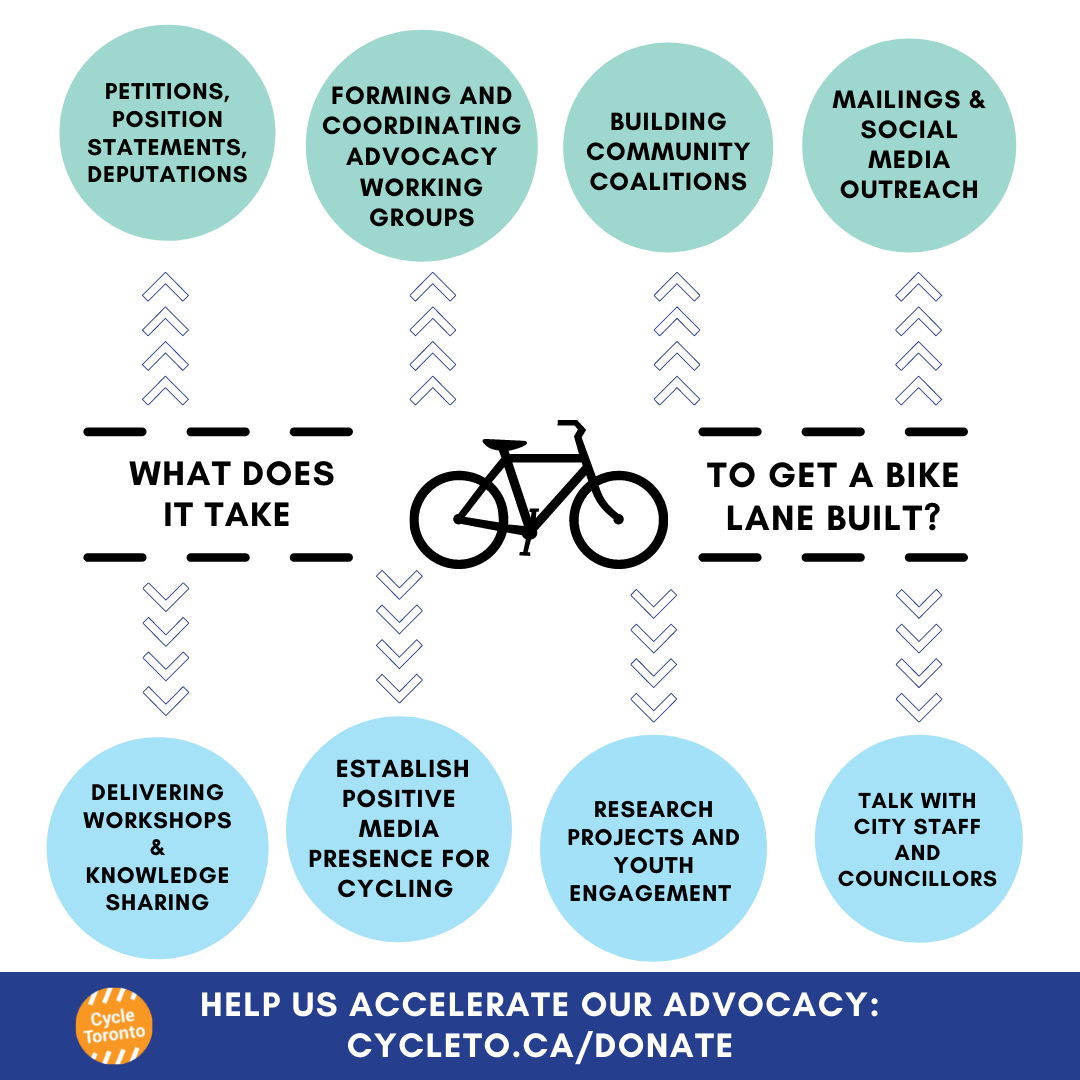
What does it take to get a bike lane built?

I’m Kevin, and as the Campaigns Manager for Cycle Toronto, it shouldn’t come as a surprise that I love to ride my bike. That love started early: as a kid growing up in Windsor, my bike was my key to independence, acting as my personal school bus, my chaperone to a friend’s house, and my first set of wheels.
When I moved to Toronto as a young adult, I brought biking with me, but it was a very different experience. Biking to school and work meant harrowing experiences daily, and it was shocking to me that Toronto was so hostile to people cycling. It became clear that if I wanted to bike around with friends, or even get my mother onto a bike when she visited, Toronto would need to become welcoming for people riding bikes.
In 2017, the Bloor Street Pilot felt like a breath of fresh air. I was using Bloor to commute to work, and the new road design felt much safer. My commute was made better seemingly overnight. Others must have felt the same because I saw more kids riding to school with their parents, more bikes parked outside of local businesses, and more riders with backpacks and briefcases on their way to work.
Despite its benefits, the pilot faced opposition. This is why I decided to get involved with Cycle Toronto. I joined as a member and volunteered as a ward advocate. As the “boots on the ground”, my fellow volunteers and I conducted bike counts, canvassed neighbourhoods, met with businesses, and worked with councillors and City staff to help push the pilot across the finish line.As one of those advocacy volunteers in 2017, I was thrilled to see the Bloor Street Pilot made permanent. I took on a citywide lens by joining Cycle Toronto’s advocacy committee, and today, as a member of staff, I’m even more excited to see how far we’ve come since then. Building on decades of momentum from other advocates and lessons learned from Cycle Toronto’s early campaigns, we’ve grown our advocacy to include eight campaigns that are pushing for better bike infrastructure all across the city. We’re even on the verge of major breakthroughs in my new neighbourhood in Scarborough.
Our advocacy is paying off. I have no doubt about that. On December 2, the City’s Infrastructure and Environment Committee (IEC) voted in favour of our recommendations to make all of 2020’s ActiveTO bikeways permanent and to update the City’s Cycling Plan to include roughly 100 km of new bikeways to be installed over the next three years. If adopted by City Council on December 15, all of our current campaigns will move ahead.
This IEC victory is a huge milestone, but our work isn’t finished. As we enter a municipal election year in 2022, Cycle Toronto must match the City’s most ambitious Cycling Plan to date with an equally ambitious advocacy strategy to ensure these projects are seen through, while setting the stage for even more ambitious action in the next term of City Council. What will this take? It will take meeting people where they are in their local communities, giving a platform to voices traditionally excluded at City Hall, building new partnerships with resident groups and business associations, and having a presence in every ward of the city. It will take more campaigns, more canvassing, more petitions, more letter writing, and more stakeholder meetings.There is a lot of work ahead in 2022, but Cycle Toronto’s team of staff, volunteers, and local partners are ready to meet this moment. Through our advocacy, we make the change we want to see in our city. We don’t build bike lanes; we get them built.
If you believe in the work we do, I hope you’ll consider making a donation to our end of year fundraising campaign. Please donate before December 31 to Accelerate Our Advocacy in 2022. If you have already made a donation, thank you!


